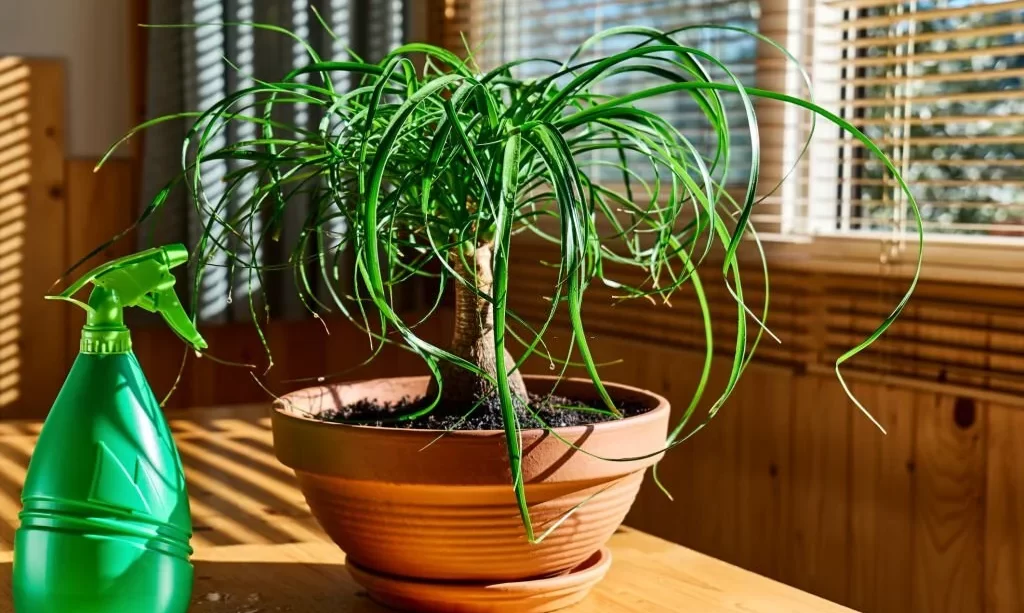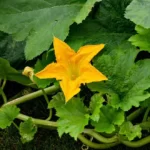The Ponytail Palm is a charming and low-maintenance plant that graces many households with its unique appearance. With its long, slender leaves cascading from a striking swollen base, it’s no wonder why so many people fall in love with this eye-catching houseplant. But did you know that you can easily grow more Ponytail Palms by propagating them? In this article, we’ll guide you through the simple yet rewarding process of multiplying your Ponytail Palms, whether you’re a seasoned gardener or just starting your green journey.
- The Elephant’s foot adapts to any room in the house, but indirect bright to medium light conditions is the best. This plant can acclimate in direct sunlight. You don’t have to worry about watering too much as the Ponytail Palm
- The Ponytail palm made NASA’s list of the top air purifying indoor houseplants. Indoor houseplants help decrease stress and anxiety while stimulating creativity and productivity. The Ponytail Palm lives comfortable between 55-85ºF.
- With Its sleek bulb like trunk and lush, long curly leaves, the Ponytail Palm makes a visually stunning addition to any home or office setting, indoor or outdoor, this lush and easy to care for plant will go well in any space.
- NON-TOXIC PETS PLUS KEEPS YOUR HOME HEALTHY. Plants increase humidity and reduce levels of certain pollutants, as well airborne dust. Cat palm tree is perfectly safe for your pets.
- SHIPPING RESTRICTIONS. Due to USDA regulations, this plant cannot be shipped to California or Arizona. Shipping to extreme cold weather states is also not recommended.
Ponytail Palm
Before we dive into propagation, let’s get to know our star plant a bit better. The Ponytail Palm, scientifically known as Beaucarnea recurvata, is not a true palm but rather a member of the agave family. Its long, thin, and arching leaves resemble a cascading ponytail, hence the name. What makes it even more captivating is its swollen base, which stores water, making it exceptionally drought-tolerant.
This plant is not only aesthetically pleasing but also incredibly resilient, making it an excellent choice for both novice and experienced plant enthusiasts. Its unique appearance and minimal care requirements have made it a favorite choice for indoor gardening. Now that we have a better understanding of this plant, let’s explore why propagating it is a fantastic idea.
Why Propagate?
You might be wondering why you should bother propagating your Ponytail Palm when you can easily purchase a mature plant. Well, there are several compelling reasons. First and foremost, propagating your plant allows you to grow multiple Ponytail Palms without spending a fortune on new ones. It’s a budget-friendly way to expand your indoor garden or share the joy of gardening with friends and family.
Moreover, the act of propagating your plant can be incredibly rewarding. Watching tiny offsets or seeds grow into mature plants under your care can be a deeply fulfilling experience. It connects you more intimately with the world of plants and deepens your appreciation for the natural world.
So, whether you want to save money, share the plant love, or simply enjoy the satisfaction of nurturing new life, propagation is a fantastic way to make more Ponytail Palms a part of your life.
Methods of Propagation
Now that you understand why propagating your Ponytail Palm is a fantastic idea, let’s explore the two main methods of doing so: offsets and seeds.
Propagating with Offsets
Offsets are like the baby plants of the Ponytail Palm world. They are small shoots that grow alongside the main plant. Propagating with offsets is a popular and straightforward method. To get started, you’ll need to carefully remove these baby shoots from the parent plant. Ensure that each offset has its roots attached, as this will increase its chances of survival when you transplant it. Once separated, you can plant the offsets in a well-draining potting mix. Make sure the pot has drainage holes, and keep the soil slightly moist. Over time, these offsets will grow into mature Ponytail Palms, adding more greenery and charm to your space.
Propagating from Seeds
If you’re up for a bit more patience and adventure, you can also propagate your Ponytail Palm from seeds. While this method takes longer to see results, it can be a rewarding journey. To begin, collect the seeds from your mature Ponytail Palm. These seeds are usually found in the dried flower spikes. Soak them in warm water for a day or two to soften their tough outer shells.
Next, plant the seeds in a well-draining potting mix. Keep the soil consistently moist but not waterlogged. Place the pot in a warm and bright location, but avoid direct sunlight, which can scorch the young seedlings. Be patient; it can take several weeks to several months for the seeds to germinate and grow into small plants.
Choosing between offsets and seeds depends on your preferences and the time you can dedicate to the process. Both methods can be successful, and before you know it, you’ll have more Ponytail Palms gracing your indoor garden.
Caring for Young Plants
Caring for your young Ponytail Palm plants, whether propagated from offsets or seeds, is essential to ensure their healthy growth. Here are some key care tips:
- Watering: Young plants are more sensitive to overwatering, so let the top inch of the soil dry out before watering. Ensure the pots have drainage holes to prevent waterlogged soil.
- Light: Provide bright, indirect sunlight for your young Ponytail Palms. They love sunlight but can get sunburned if exposed to direct sunlight for too long.
- Temperature: Keep your plants in a warm environment, ideally between 65-80°F (18-27°C). They can tolerate slight temperature variations but prefer consistency.
- Soil: Use a well-draining potting mix to prevent root rot. You can also add perlite or sand to improve drainage.
- Fertilizing: Feed your young plants with a balanced liquid fertilizer diluted to half strength every 4-6 weeks during the growing season (spring and summer). Avoid fertilizing during the dormant winter months.
Remember that patience is key when caring for young Ponytail Palms. As they grow, you can gradually adjust their care routine to match that of mature plants.
- New Liquid Fertilizer for: Beaucarnea (Ponytail Palm, Elephant’s Foot Tree)
- This food for plants belongs to the latest generation of fertilizers, for healthy and bright green leaves, stable branches, strong bud formation, balanced rooting.
- Very rapid effects, can be administered via the roots and as a foliar fertilizer. For 60-125 liters of ready to use liquid fertilizer
- Content: 250 ml, works as an economical concentrate. Simple dosage with the help of the cap.
- The fertilizers from the GREEN24 PROFI LINE were developed by gardeners of various departments and were evolved and produced based on the current knowledge in the field of propagation and cultivation of plants.
Troubleshooting Common Issues
While Ponytail Palms are generally hardy, you may encounter some issues. Here are common problems and how to address them:
- Yellowing Leaves: Yellow leaves can signal overwatering. Ensure the soil dries out between waterings.
- Brown Tips: Dry and brown leaf tips can indicate underwatering or low humidity. Increase watering and consider misting the plant or using a humidity tray.
- Root Rot: If the plant’s base becomes mushy or the leaves start drooping, it could be a sign of root rot. Trim affected roots and repot the plant in fresh soil.
- Pest Infestations: Look out for mealybugs or spider mites. Use insecticidal soap or neem oil to treat infested areas.
Conclusion
In conclusion, propagating your Ponytail Palm can be a fulfilling journey, whether you choose offsets or seeds. By understanding the unique features of this plant, appreciating the benefits of propagation, and mastering the methods, you can watch your plant family grow. Remember to provide the proper care, such as the right amount of water, light, and temperature, to nurture your young Ponytail Palms into healthy, mature plants. Keep an eye out for common issues and troubleshoot as needed to ensure their well-being. With a little love and patience, you’ll enjoy a thriving collection of these captivating plants, adding beauty to your indoor space and sharing the joy of gardening with others. Happy propagating!





